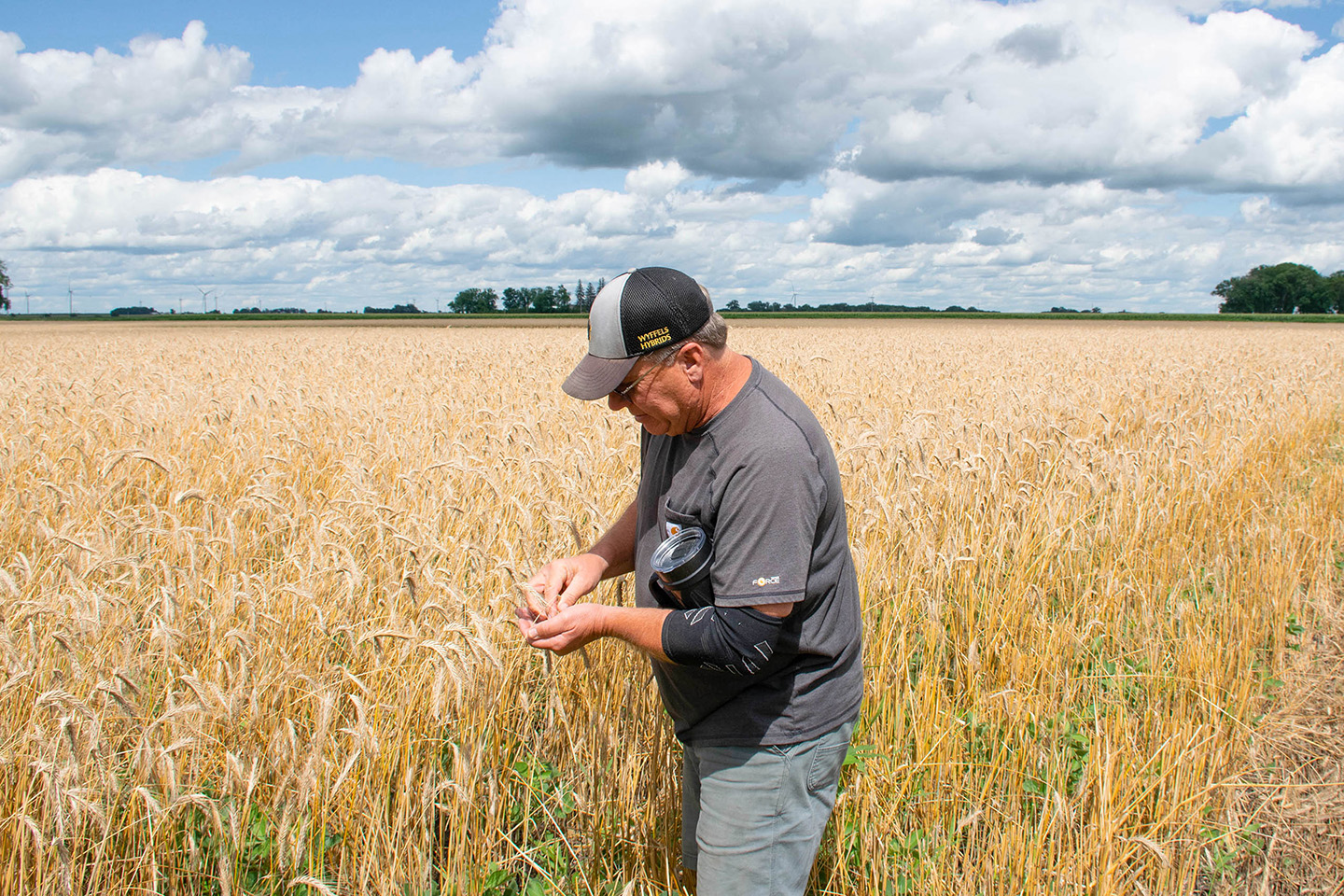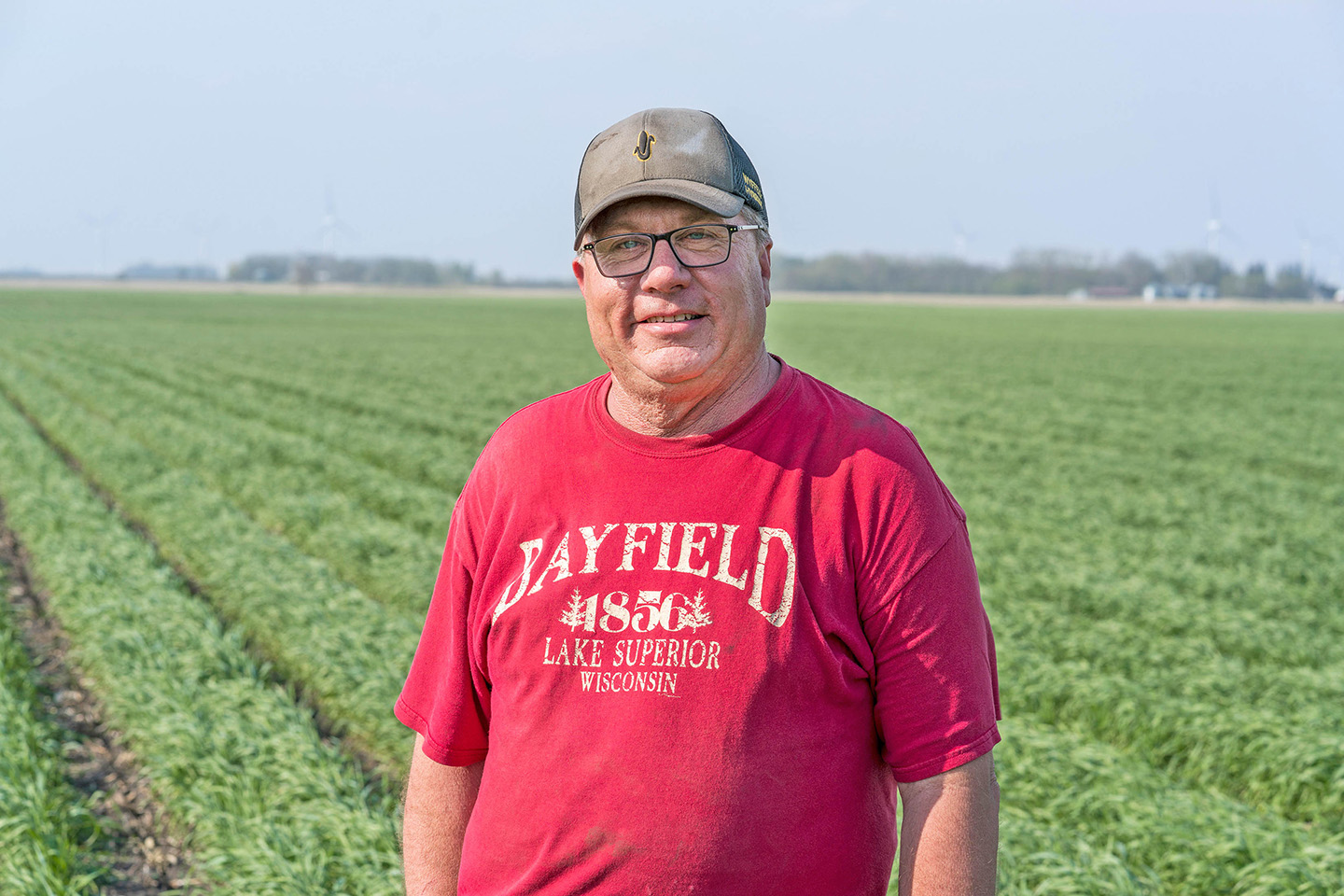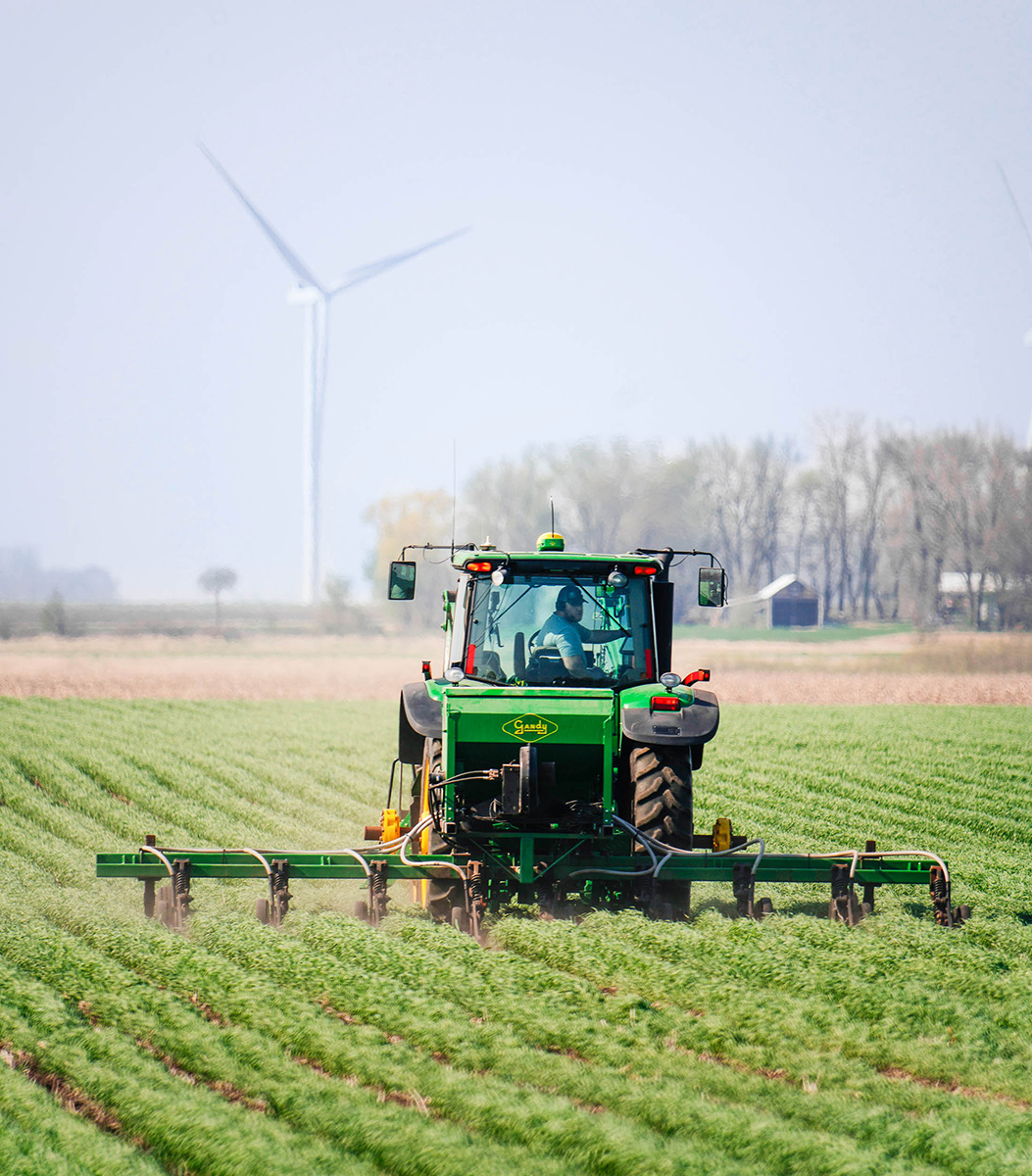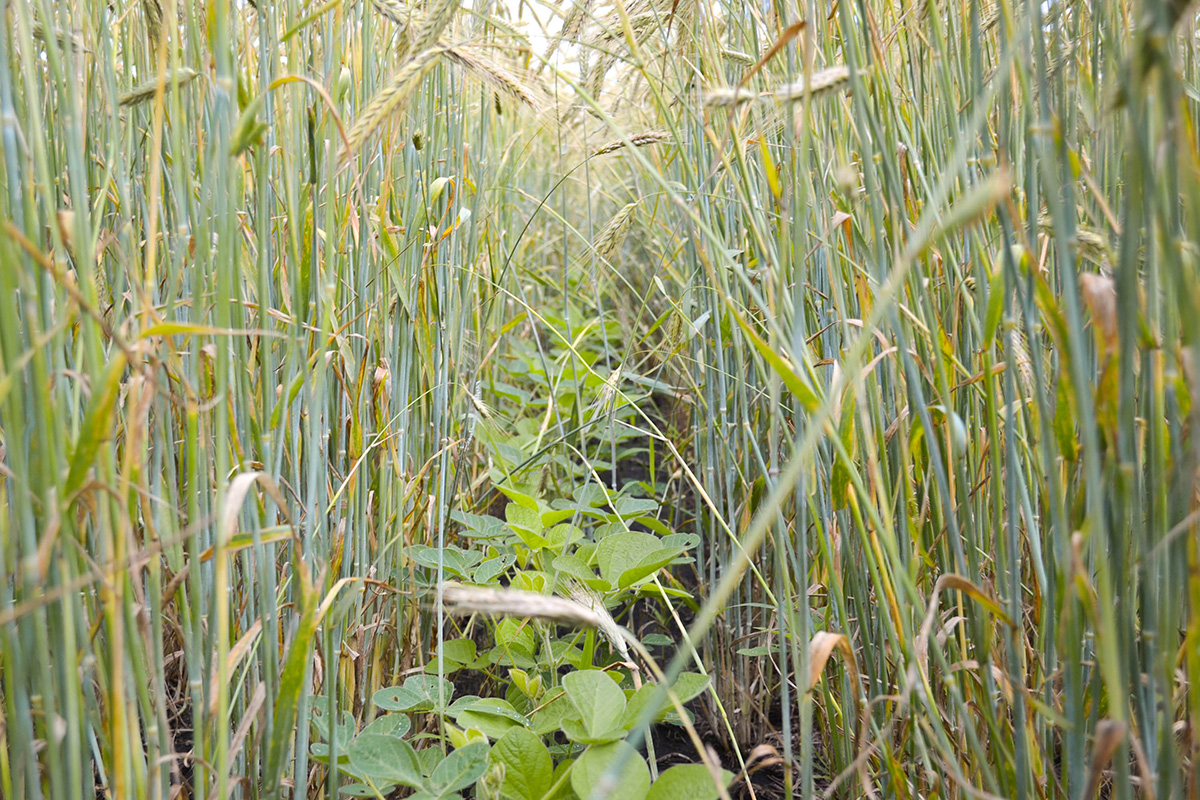
(Photo: Joseph Hopper/Iowa Soybean Association)
Two in One: Relay crop trial results
January 4, 2023 | Kriss Nelson
By participating in on-farm trials, producers can test products and practices to help make management decisions on their farms. This also helps build a body of research and information to assist other farmers in their decision-making.
Russ Olson, Iowa Soybean Association (ISA) farmer-member from Northwood, with the assistance of ISA and the Northeast Iowa Resource Conservation and Development (RC&D), wrapped up his fourth year of participating in relay cropping trials. The cropping trials are a part of RC&D’s Multi-Cropping Iowa project.
Olson used 10-inch, twin-row spacing to drill his cereal rye on 30-inch centers in the fall of 2021 and planted soybeans into the 20-inch gap in spring 2022.
Olson says he found a later-maturing soybean works in the relay cropping system and planted a 2.4-maturity bean in 2022. He also planted open-pollinated rye and hybrid cereal rye varieties.

Although he was pleased with the rye yields, his soybeans were another story. “I am somewhat disappointed in the soybean yield,” he says. “Not exactly sure what happened, but this is why we do trials.”
Olson’s relay crop soybeans yielded 11 to 14 bushels per acre compared to 49 to 54 bushels per acre he received on his sole crop soybeans.
One theory Olson has is the 2.4-maturity soybeans were planted in the second week of May – far behind his preference of a late-April planting date.
“We just did not have much bean growth after we harvested the rye,” he says. “We even had ideal growing weather after we took the rye out.”
Olson says his rye crop made up for his less-than-impressive soybean yields.
“I didn’t expect top rye yields. Rye is planted in strips with gaps for beans, so you don’t plant the whole field,” he says. “I thought the rye was fabulous. Best rye I have ever raised.”
Trials and tribulations
Olson says he enters each on-farm research trial knowing the results may only sometimes be favorable.
“When doing trials, we realize there are always variables involved. It isn’t until after the fact that you know what affected the results,” he says. “We are not 100% sure what knocked the bean yields down, but I strongly suspect it was the later planting date.”
Ross Evelsizer, natural resources projects director for RC&D, says he started a Multi-Cropping Iowa project to explore relay cropping. He says relay cropping can be a way for producers to diversify their farms while maintaining or improving environmental integrity.
“Relay cropping is a new practice, and there is more to learn to optimize it to reduce risks for producers,” says Evelsizer.
Trials like the one Olson was involved in help Evelsizer and others better understand the agronomics for things such as variety, planting arrangement and dates, and harvest practice. Another opportunity is to learn about market opportunities.
“If a producer can get 90-plus bushel to the acre cereal rye and a crop of soybeans off a relay field, that puts them way ahead, but only if they can market both crops,” Evelsizer says.
The results of Olson’s trial and other relay cropping trials have Alex Schaffer, ISA field services program manager, wanting to diver deeper into on-farm relay cropping trials to further look at soybean maturity.
“I would like to look at different soybean maturities in the system by splitting the planter with two different maturities,” he says.
A good example would be a 2.7 versus a 3.2-maturity soybean.
“This planting technique would be easy for the farmer as they just have to plant and harvest as normal and share their as-applied yield files,” he says. “It is also valuable research because this is an opportunity to identify what works and what doesn’t work when it comes to soybean maturity in a relay cropping system.”
By researching two different maturity groups in a relay cropping system, Schaffer hopes to build evidence to support his theory that a longer-maturity soybean will thrive better in this scenario.
“In Russ’ trial, the early maturity soybeans didn’t vegetatively grow after the rye was harvested,” he says. “They were under heavy competition with the rye, leading to fewer nodes and pods.”
Schaffer would also like to implement relay cropping trials throughout the state to avoid any risks associated with an early frost.

Join a trial in 2023
Whether you are participating in a relay cropping trial or another on-farm trial, Schaffer says it is essential to conduct on-farm research trials to help generate the data for use as decision-making tools.
“On-farm trials are important to identify opportunities and risks,” he says. “Whether they are products or practices, how will we know if we don’t try?”
Back